
Whilst the extensive testing of the "Bug" (the Gullwing prototype) at Oulton Park in December 1957 was being carried out Raymond Flower's brother Neville visited Giovanni Michelotti and Alfredo Vignale in Turin to set in motion the design and production of a Gullwing styled body for the new Frisky car due to be launched at the forthcoming Geneva Motor Show in March 1955.
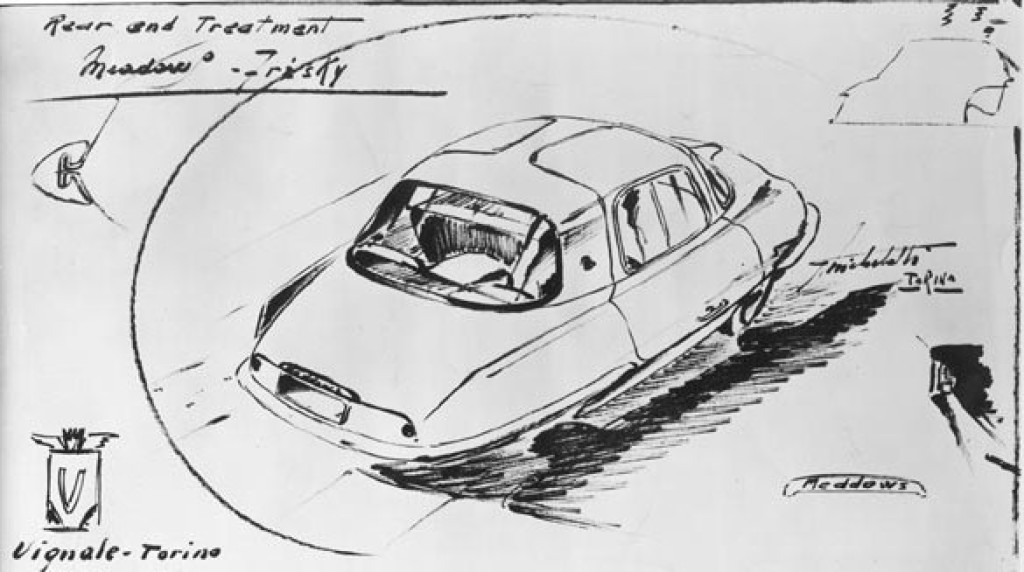
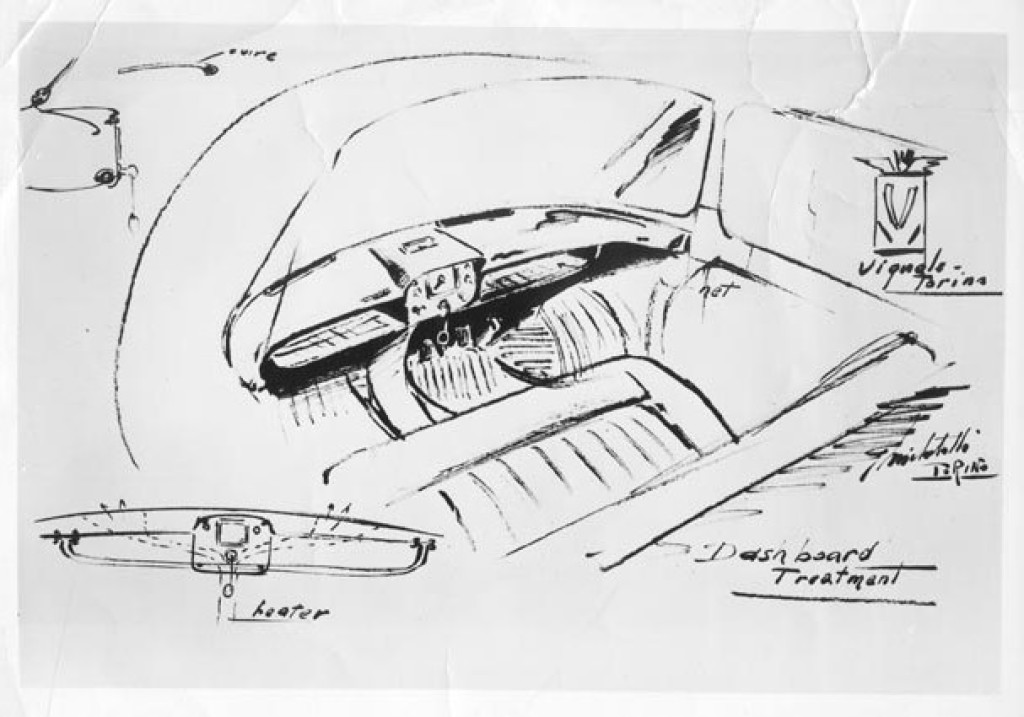
Original Giovanni Michelotti design sketches for the Gull Wing
Two chassis were despatched by air to Turin to be mated with the new body designed by Giovanni Michelotti and a resulting car despatched direct to Geneva, minus its engine which was sent from Wolverhampton. Time constraints meant it was not installed in the car but displayed on stand 68 beside it on a plinth.
A press release on 11th March 1957 announced that this "New British Small Car" was to be unveiled on 14th March 1957 Geneva Motor Show as The Meadows Frisky.

Geneva Motor Show 1957
There were three new cars at the show styled by Giovanni Michelotti, but the Frisky was the first instance of Gull-Wing doors in Italian coachwork, its revolutionary styling and engineering concept made it an immediate success.

The Frisky had the first instance of Gull Wing doors on Italian coachwork
Technical description (from 1957 Press Release)
The chassis is of welded tubular steel, combining great rigidity with lightness in weight.
The front suspension is independent, on the Dubonnet principal using rubber in torsion. The rear suspension consists of two hydraulically damped coiled spring units attached to two radius arms which carry the live rear axle. The pivot bearings are heavy-duty rubber bushes.
The car is powered with the Villiers Mk2T 249cc twin-cylinder 2-stroke engine, incorporating the Siba Dynastarter, This engine develops 15.H.P. at 5,500rpm. Fitted integrally with the engine is a 4-speed gearbox, The engine reverses through the starter, a special selector switch being incorporated.
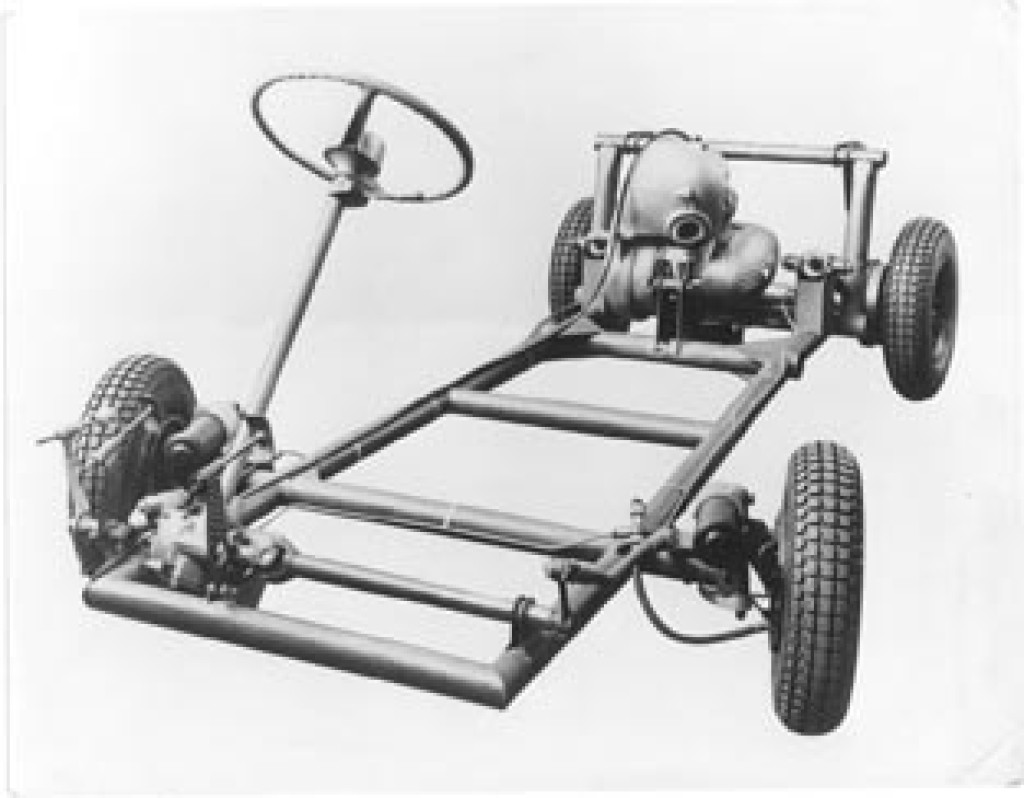
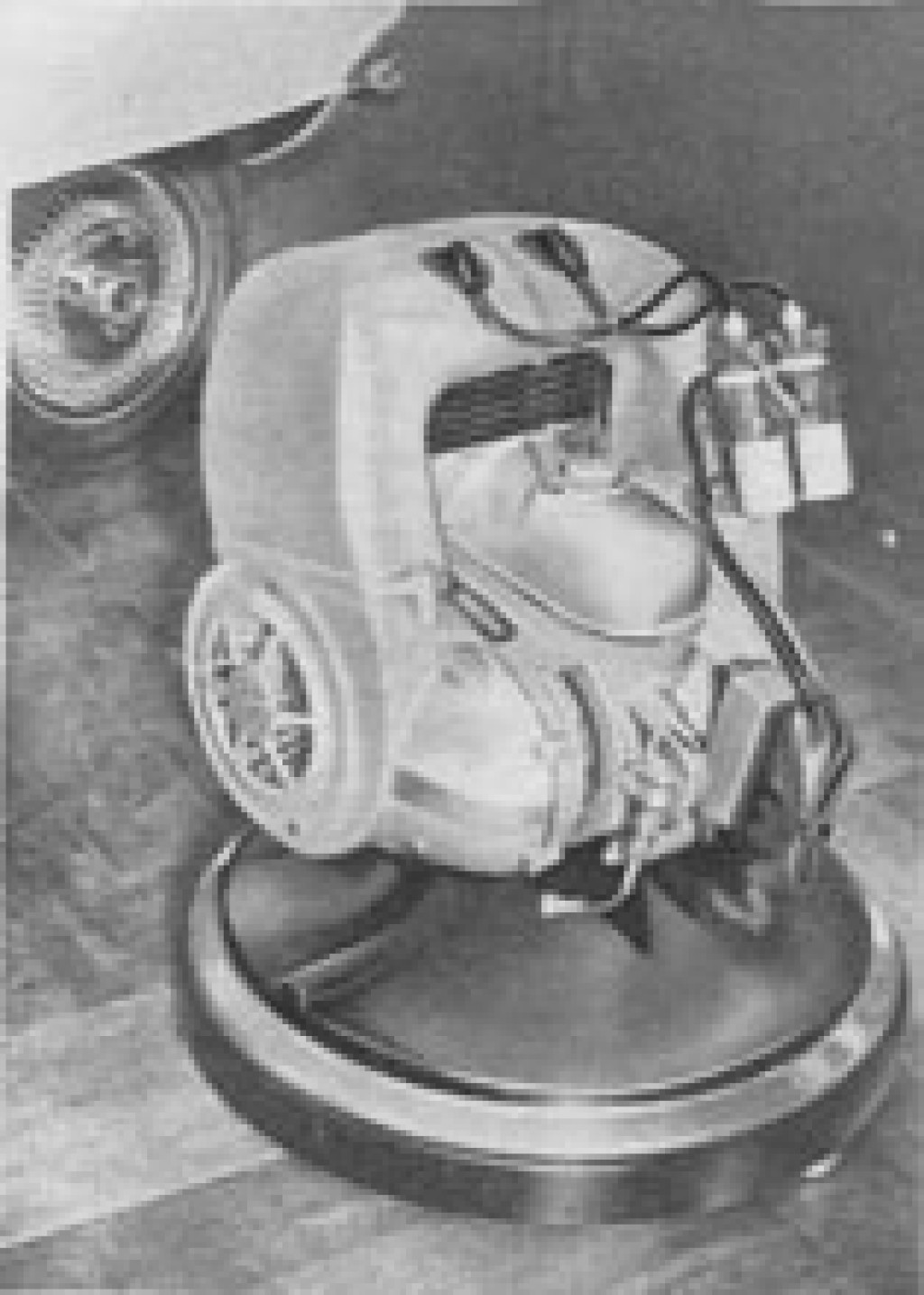
Transmission final drive is by roller chain direct to the solid rear axle, and the chain is housed in a sealed oil bath chaincase.
The brakes, with a braking surface of some 230 sq.in per ton, are remarkable. They are hydraulically operated are very effective, and require only very light pedal pressure. The hand brake operates directly on the two rear wheels.
Instrumentation includes speedometer, light controls, ignition warning etc., lights can be dipped, dim or full ahead. All electrical services are on a 12-volt battery.
The body designed by Michelotti in association with the famous Italian company Vignale of Turin incorporates the latest type Gull Wing doors, which are hinged close to the centerline of the roof, allowing the maximum ease of entrance. The windscreen is a complete wrap-around, giving perfect vision forward and this, combined with the large rear window, ensures the highest standard of visibility.
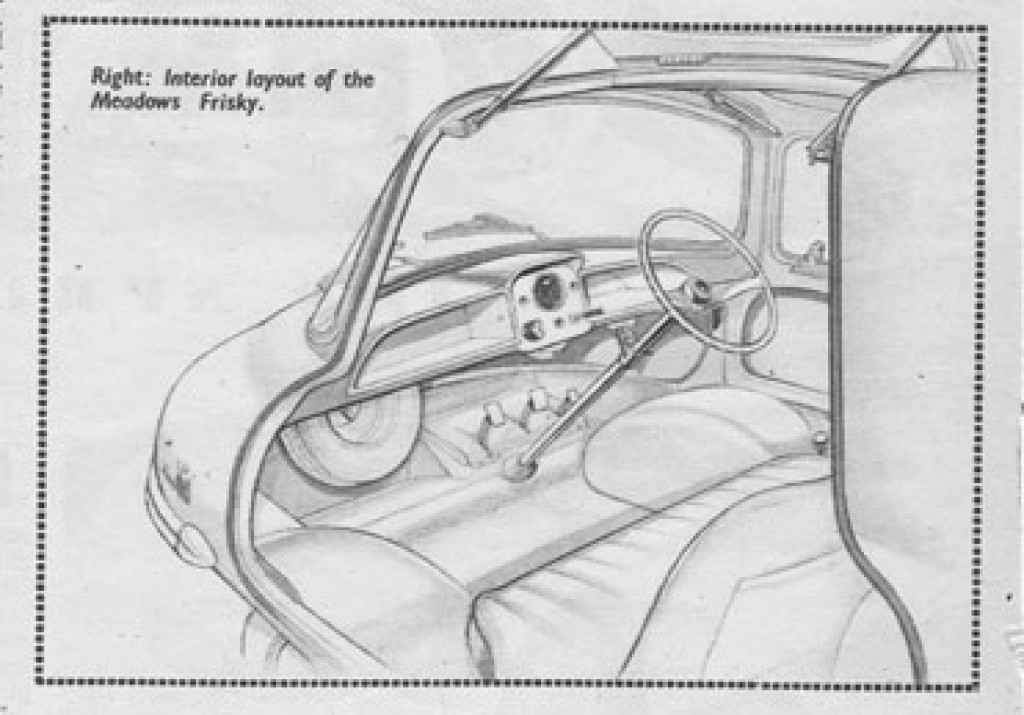 The bench-type front seat is capable of seating two adults plus a child, There are two seats at the rear for children or equivalent space for luggage. All seats are Dunlopillo upholstered, the front seat being adjustable in three positions.
The bench-type front seat is capable of seating two adults plus a child, There are two seats at the rear for children or equivalent space for luggage. All seats are Dunlopillo upholstered, the front seat being adjustable in three positions.
Normal maintenance has been cut to a minimum, there being only four grease nipples on the entire vehicle.
The overall dimensions of the body are 9 ft, 8in long, 4 ft.8in wide, 4 ft.3 ins high. The wheelbase is 5 ft, front track 48 ins, rear track 34 in. The weight of the car including 31/2 gallons of petroil is approximately 6 cwts. Fuel capacity is 31/2 gallons including a controllable reserve giving a range in excess of 220 miles.
The car will cruise at a steady 50 mph and the average consumption, under touring conditions, is at least 75 mpg.
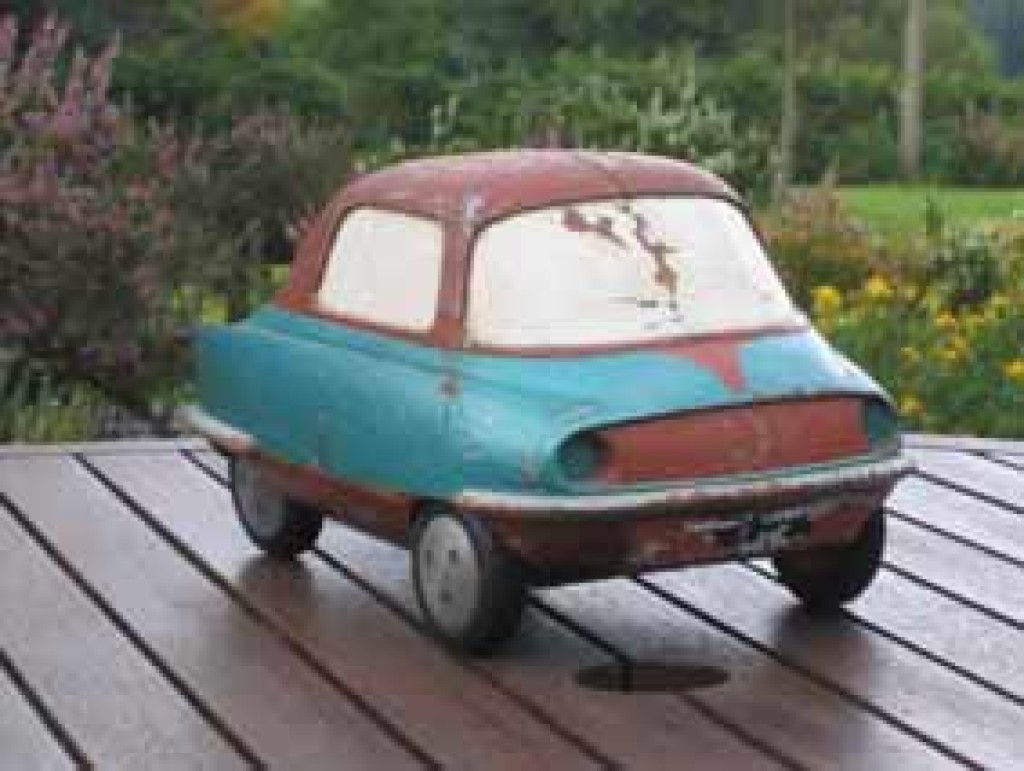
The original Balsa wood model by Vignale Turin
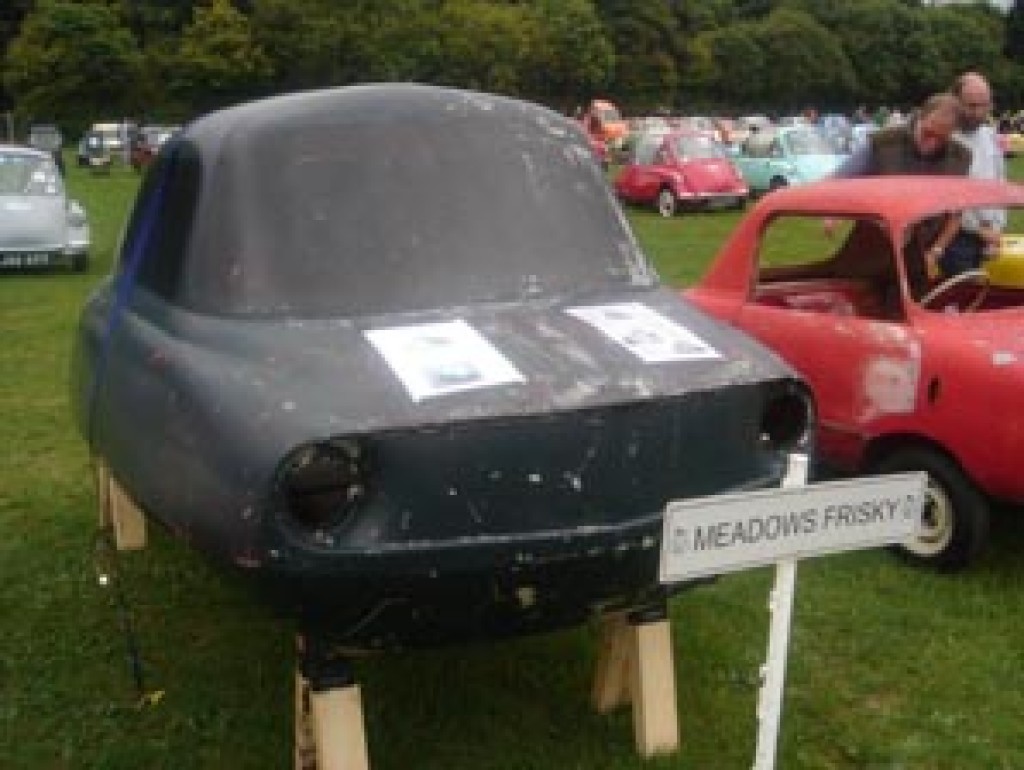
The original full-size trial Buck
Despite being greeted with great acclaim this magnificent little car could unfortunately not be manufactured within its target selling price of £400 including purchase tax and was re-launched only nine months later, with a completely redesigned body at the 1957 Earls Court Show as The Meadows FriskySport.